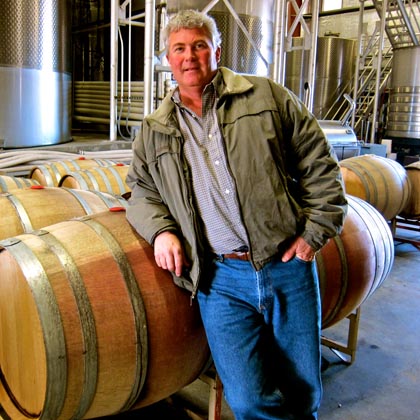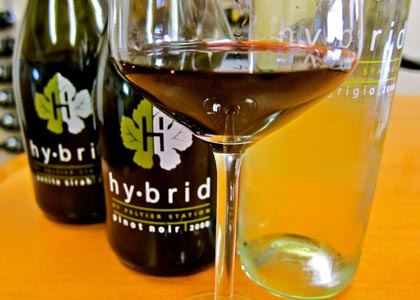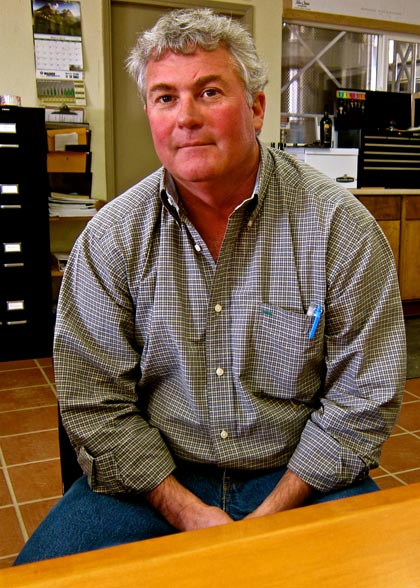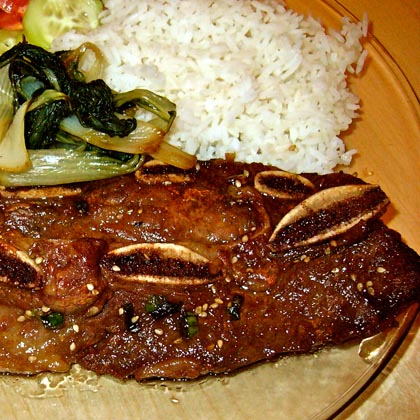Letters from Lodi
An insightful and objective look at viticulture and winemaking from the Lodi
Appellation and the growers and vintners behind these crafts. Told from the
perspective of multi-award winning wine journalist, Randy Caparoso.
Hybrid Pinot Noir is shaking trees
Third generation Lodi grower, Peltier Station's Rod Schatz
The goal when producing their Lodi grown Pinot Noir, bottled under the Hybrid by Peltier Station label, according to winemaker JC van Staden, was “to make a good wine, not necessarily a Pinot Noir.”
Okay, input scrambled, brain freeze… then you swirl, sniff and sip the 2008 Hybrid Lodi Pinot Noir once again, and the inside-information starts to seep in more sensibly: a velvety smooth, plump, pliant, softly delicious burgundian colored wine, but even more amusing in its presumptuousness — a hugely aromatic nose, at once sweetly strawberryish in a perfumed sense, with a smoky richness, nuanced with red rose petal spiciness and tiny hints of loamy earth… a little wiggle in the walk, a little giggle in the talk…
Then you look at the wine’s price — $9.99 — and you wonder again: why in the world do people pay $25, $50 or more for Pinot Noirs that don’t give nearly as much bare, naked pleasure?
The entire idea behind the Hybrid line, Peltier Station grower/proprietor Rod Schatz tells us, is also “transparency.” Therefore, on the back label of the Hybrid Pinot Noir bottle you also read that the wine is only 80% Pinot Noir, and blended with 15% Petite Sirah and 5% of that wild, uniquely Lodi-an grape (since most other regions in California pulled it out long ago in the name of merlorizing and cabernezian), Alicante Bouschet. Pinot purists may gasp, but when you seriously consider the brilliantly spiced strawberry perfume in the Hybrid, you can only make one conclusion: unless tons of Birds Eye strawberry purée were sneakily poured into the fermenting vats, the actual varietal character of the Hybrid is still purely, and wonderfully, pinot noirish, since Petite Sirah and Alicante Bouschet certainly don’t give this kind of aroma and flavor.
As it were, Schatz grows his Pinot Noir in Lodi’s Cosumnes River AVA, north of the Mokelumne River AVA (the latter, the historical heart of Lodi’s old vine plantings), where the terroir is influenced by gravelly alluvial soils and markedly cooler air coming directly off the San Joaquin-Sacramento River Delta. Still, not exactly the meager, ultra-cold climate conditions associated with most of California’s prestige brands of Pinot Noir. Nonetheless, Mr. van Staden maintains, “Pinot Noir has this stigma that it has to be grown in a cooler climate, which may be true, but that doesn’t keep Pinot Noir from being grown in Lodi without any issues.”
Who wouldn't buy a hybrid from this man?
Holding up a glass of Hybrid as evidence, JC adds that “we were surprised as anyone when we blended such large proportions of Petite Sirah and Alicante Bouschet into the wine — the Petite and Alicante added the color and mid-palate strength that the Pinot Noir lacked, but those grapes didn’t overpower the strawberry flavor and flowery bouquet of the Pinot Noir at all. Pinot Noir grown in Lodi doesn’t really have the tannin structure, yet adding Petite Sirah and Alicante Bouschet doesn’t change the flavor profile of our Pinot Noir — it just enhances it!”
Schatz jumps in by saying, “the Hybrid Pinot Noir fulfills what we are trying to achieve with this brand: great drinking wines, made with some unusual approaches to blending — like the fuel/electric blending of hybrid cars — which we state right on the bottle, and sold for an extremely cost effective price. When I taste the pinot, it gives me three impressions, in three stages: the first impression is that it is ‘Pinot Noir.’ The second stage, the mouth-filling structure provided by the other grapes. Then the third impression: ‘I’d sure as hell like to drink more!'”
Schatz then picks up a bottle and reads his bold, half-facetious “mission” statement for the Hybrid brand stated on the back: Revolutionary new products that combine highly advanced technology with sustainable winegrowing principles. While you may not get 45 MPG, you will get the most flavorful wine of the 21st century. At the moment a Federal Tax credit is not available — however, at this price anyone can own a Hybrid.
At the moment, there are three other wines, all retailing for $9.99, bottled under the Hybrid by Peltier Station label:
- The tart edged, light-medium bodied contemporary style 2008 Hybrid Lodi Chardonnay, sporting smidgens of tropical fruit toned Viognier blended in to contrast with the white wine’s bone dry qualities.
- The lemony tart and scented 2008 Hybrid Lodi Pinot Grigio; its light-medium body filled out by the melony flavor and slight Muscat-like fragrance of the Vermentino grape (25% of the blend in this bone dry white).
- The inky dark, smoky, tight fisted 2007 Hybrid Lodi Petite Sirah; stronger in flavor than in the nose (thickly sinewed, dense and beefy flavors), blended with 10% Viognier (“all the good it was trying to lighten it up with a fragrant white wine,” says JC… “the wine still ended up black and thick!”)
Finally, let’s talk about where a red wine like the Hybrid Pinot Noir also excels, apart from lightening up our monthly wine budgets: such a soft, fragrant, yet round and smoky/spicy red wine is particularly ideal with marinated and grilled meats. Think, for instance, of Hawaiian style teriyaki, where sweet/salty/garlic/gingery spiced soy marinades sizzle when they hit the grill — the strawberry perfume of the the pinot lends delicious balance to the sweet/salty meat sensations, while the smoky oak nuances of the wine mingle with the char of the beef. And while smoothly rounded, there is just enough tannin structure in the wine to give you the beefiness needed to absorb the fats and sinew in either short ribs or thin slices flank used in this style of marinated beef.
For a basic, super-simple pinot-friendly recipe, check out this one for Teri-Beef, to which we’d add chopped ringlets of green onions in the sauce or as a garnish. Getting hungry? Reach for a Hybrid!



